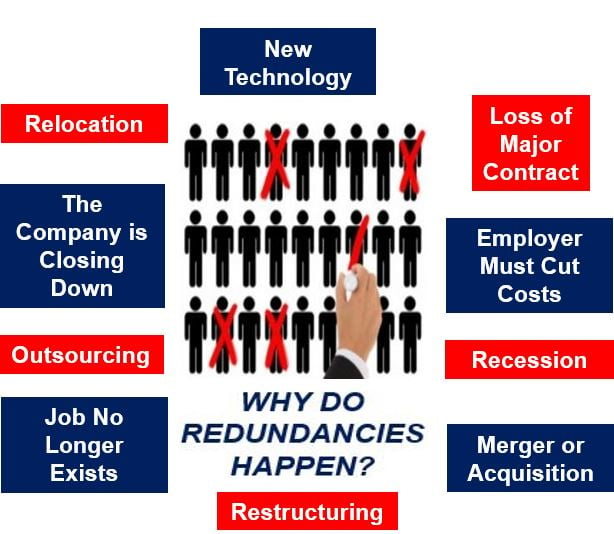Investigating the Interaction Between Company Redundancy and Business Adaptability for Future Growth
In the vibrant landscape of today's organization world, the intricate connection in between business redundancy and organizational adaptability arises as an essential aspect for continual growth and success. Business commonly encounter the challenge of striking a delicate balance in between keeping a degree of redundancy to mitigate risks and fostering versatility to respond quickly to the ever-evolving market needs.
Value of Firm Redundancy
Firm redundancy is a crucial element that enhances organizational resilience and mitigates operational risks. By integrating redundancy procedures within the organizational framework, firms can better stand up to unanticipated interruptions and variations in business atmosphere. Redundancy serves as a tactical buffer, allowing companies to adjust and react successfully to unforeseen difficulties without jeopardizing vital operations.
One key facet of the relevance of firm redundancy is its function in making sure continuity during times of situation. When encountered with unexpected changes or emergency situations, repetitive systems, resources, or personnel can step in to keep vital functions and prevent prevalent interruptions. This continuity not just safeguards the business's credibility and customer trust fund however also decreases monetary losses and functional downtime.

Approaches for Organizational Versatility

Developing adaptable organizational structures that permit for fast adjustments to market characteristics and customer needs is vital for staying competitive in a swiftly progressing atmosphere. By proactively identifying possible disturbances and opportunities, organizations can proactively adjust and prosper in an ever-changing organization landscape.
Harmonizing Redundancy and Adaptability
Accomplishing an unified equilibrium in between functional redundancy and organizational versatility is extremely important in navigating the intricacies of a vibrant business atmosphere. Striking the best equilibrium in between redundancy and adaptability is a delicate process that calls for a deep understanding of the company's goals, market characteristics, and threat tolerance.
To achieve this balance, business need to carry out routine evaluations of their procedures to determine locations where redundancy is needed for risk mitigation and where adaptability can drive development and growth. Executing versatile structures, fostering a culture of continual news understanding and renovation, and urging open communication across all degrees of the company are crucial methods to balance redundancy and adaptability efficiently. By aligning these two crucial elements, business can position themselves for lasting development and success in an ever-changing service landscape.
Situation Studies on Adjustment Success
In taking a look at circumstances of effective organizational adaptation, it becomes apparent that the interplay between functional redundancy and versatility is a specifying variable in forming resilient companies. A DVD rental service, Netflix demonstrated amazing versatility by transitioning right into a streaming system when digitalization interrupted the market. These situation research studies highlight the relevance of functional redundancy paired with business versatility in promoting long-lasting growth and competitiveness.
Building Strength for Future Development
Building resilience for future development requires a tactical placement of operational procedures with market dynamics and arising patterns. Companies need to adapt to transforming environments by cultivating a culture of flexibility, development, and continual enhancement.
Moreover, cultivating solid relationships with stakeholders, such as consumers, employees, distributors, and the community, is crucial for keeping and weathering unpredictabilities count on and assistance during unstable times. Effective communication and openness play a vital function in structure resilience, as they assist align expectations and assist in partnership in browsing uncertainties.
Additionally, companies require to focus on knowing and advancement campaigns to upskill staff members and equip them with the required tools to adjust to transforming circumstances. By buying their workforce, business can improve their flexibility and dexterity, inevitably strengthening their strength for lasting future development.
Conclusion

In the vibrant landscape of today's business world, the detailed connection in between firm redundancy and organizational flexibility emerges as a critical element for continual development and success. Companies usually face the difficulty of striking a fragile balance between preserving a degree of redundancy to minimize dangers and cultivating adaptability to respond promptly to the ever-evolving market needs.To achieve this balance, business require to conduct regular evaluations of their procedures to recognize locations where redundancy is required for risk reduction and where flexibility can drive innovation and growth.In final thought, the interplay in between business redundancy and business flexibility is crucial for future growth. Building durability with a combination of redundancy and versatility will certainly ensure that companies are prepared for the difficulties of the future.